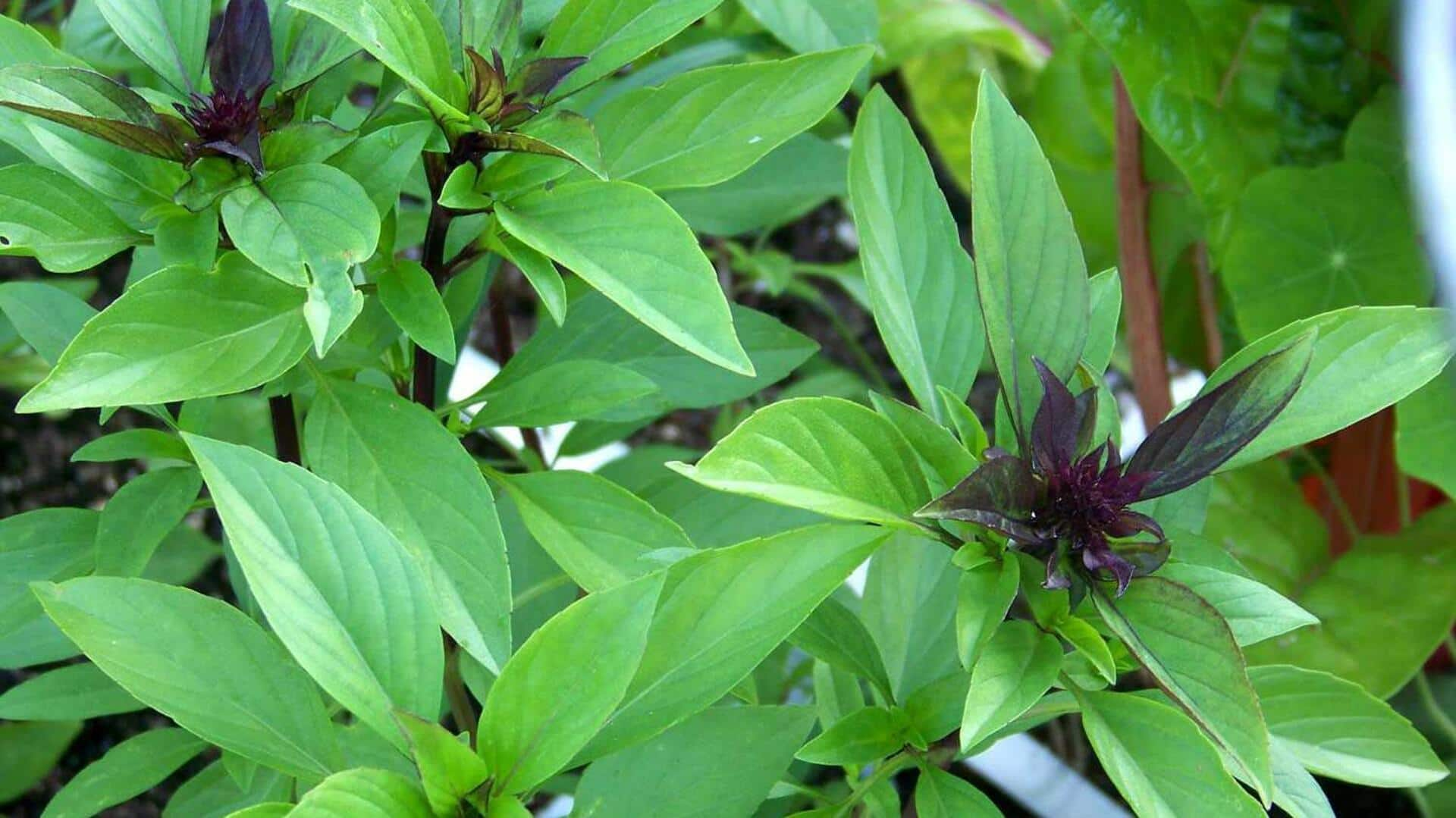
How to grow Thai Basil at home
What's the story
Thai basil is a popular herb with a distinct flavor and fragrance, widely used in a range of culinary preparations. Growing Thai basil at home can be a fulfilling experience, yielding fresh leaves for your kitchen and greenery for your decor. However, to grow this aromatic plant successfully, you must learn about its special requirements and care. Here are some useful tips to grow healthy, thriving Thai basil plants in your home garden.
Tip 1
Choosing the right location
Thai basil flourishes in warm, sunny conditions. Choose a place that gets at least six hours of direct sunlight every day. If you are growing indoors, position the plant near a south-facing window or use grow lights to give them the required light. Sufficient lighting will promote healthy growth and improve the taste of the leaves.
Tip 2
Soil preparation and planting
For optimal growth, use well-draining soil rich in organic matter. A mix of potting soil with compost or aged manure works well for Thai basil. Ensure that the soil pH is between six and seven for best results. When planting seeds or seedlings, space them about 12 inches apart to allow sufficient room for growth.
Tip 3
Watering techniques
While consistent watering is essential to keep Thai basil plants healthy, avoid overwatering as it may cause root rot. Water the plants when the top inch of soil feels dry to touch, making sure that excess water drains away from the roots. The plants may require more frequent watering during hot weather or if grown indoors with artificial heat sources.
Tip 4
Pruning and harvesting tips
Regular pruning promotes bushier growth and prevents flowering, which can change the flavor of leaves. Pinch off flower buds when they appear and regularly trim back stems to encourage new leaves. Harvest leaves by cutting just above a pair of leaves on each stem; this technique promotes further branching and the development of leaves.
Tip 5
Pest management strategies
Thai basil can attract pests like aphids, spider mites, etc., which could hurt plant health if left unchecked. Check plants regularly for signs of infestation like discolored leaves or webbing on stems. Treat affected areas quickly using natural remedies like neem oil spray or insecticidal soap solutions instead of chemical pesticides, if possible.